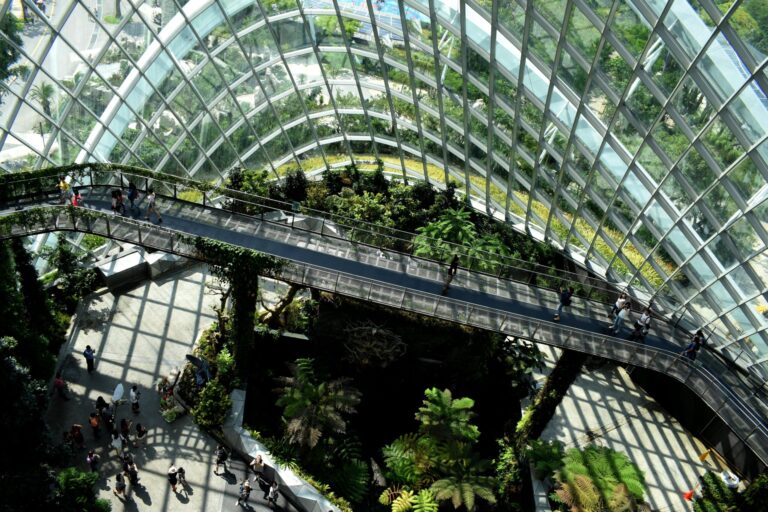Why Circular Economy Is the Future
 The concept of circular economy has existed since the 70s when the reduce, reuse and recycle or 3Rs movement was first introduced. But it didn’t take any form until the early 20th century when people experienced firsthand the throes of climate change, from global warming, rising sea levels and extreme weather conditions.
The concept of circular economy has existed since the 70s when the reduce, reuse and recycle or 3Rs movement was first introduced. But it didn’t take any form until the early 20th century when people experienced firsthand the throes of climate change, from global warming, rising sea levels and extreme weather conditions.
Ever since the term circular economy has become widespread, its significance has also increased and started to take root. Countless businesses have made strides in transforming their operations and making them eco-friendly, whether by using sustainable materials or the 3Rs. Find out the main reasons why circular economy is the future — and human’s best attempt — at saving the planet.
What is a Circular Economy?
A circular economy refers to a system or framework where waste is eliminated in the production of goods. Normally, when you create a product, you extract raw materials from the earth, manufacture them and throw away the waste generated — this is a linear type of economy that operates on take, make and waste build.
The circular economy is the opposite of this, as the economic activity has no dead end, meaning waste is reused and put back into circulation to close the loop. With climate change making headlines in global media, environmental experts see the circular economy as the best solution to repress or slow down the effects of global warming.
Principles of Circular Economy
The three fundamental concepts of circular economy guide businesses in shifting to sustainable processes that benefit consumers, your business and the planet.
1. Eliminate Waste and Pollution
Annually, the world creates tons of waste as byproducts of manufacturing, from massively sized airlines to tiny sachets of face wash or shampoo. Where do the scraps and unusable plastic materials end? People throw them away in landfills, incinerate or bury them in the ground, with chemicals seeping into the waterway and contaminating your tap water.
Each American generates approximately 1,646 pounds every year, and the goal of a circular economy is to get rid of these to contain pollution. How? By using the reduce, reuse and recycle system. How do you apply this in your business or personal life? Ask yourself, “What happens to the waste after making the product?”
A chef can prepare tasty meals and compost the scraps, leftovers and peels from the used ingredients to create a filter and nutritious ground for the next generation of plants to grow. By restoring soil health, they can regenerate the environment and reduce the impact of climate change. So, take time to brainstorm a solution to ensure your waste has other places to go besides landfills and oceans.
2. Circulate Products and Materials
According to the latest Circularity Gap Report, only 7.2% of the global economy is circular, down from 9.1% five years ago. This primarily means that businesses make products predominantly from virgin materials from the earth.
To uphold a circular economy model, businesses must find ways to extend the life span of their products through repair, recycling, remanufacturing and upcycling. These solutions reduce the need to extract raw materials from the earth to create a new, valuable product. How do you do this? The answer is innovation.
The best example of this is a Japanese airline company called All Nippon Airways that turned their old, unwanted staff uniforms into amazing handbags instead of obtaining raw fabrics from plants and animals. Similarly, entrepreneur Aziz Alibhai, who bought 11 old airplanes, creatively recycled them into seats inside a football ground and planned to make the others into conference rooms, bedrooms and a restaurant.
With a circular economy, products that reach the end of their life cycle are given a new life, form and use.
3. Regenerate Nature
The circular economy system’s goal funnels into environmental regeneration. The planet has sustained considerable harm from the byproducts of the manufacturing industry, resulting in enormous greenhouse gasses that help birth climate change.
Ultimately, people just want cleaner water and air and a pollution-free earth. But to achieve this requires effort and active participation. First, the world must recognize the planet is sick. While nature is blessed with healing abilities, it can’t continue recovering if people increase greenhouse gas emissions at a much faster rate. A circular economy helps slow down air pollution, giving Mother Nature ample time to recoup and recuperate.
Benefits of Circular Economy to Organizations
A circular economy entails changing your current business dynamic, and frankly, it costs financial resources. But you’ll be surprised to learn how it will elevate your organization.
1. Encourage and Accelerate Innovation
Consumers look for innovative and more appealing solutions to manage waste, reduce carbon footprint and promote sustainability.
Adopting a circular economy approach to your business process will motivate the leadership team to brainstorm better ideas to tackle environmental problems. A great example is the BlueMovement by the BSH Group, which offers home appliances-as-a-service and makes ownership of appliances obsolete. You pay a monthly subscription fee for energy-efficient equipment, and they take care of the repair, maintenance, replacement and disposal when they stop working.
2. Boost Reputation and Retain Customers
Consumers are more environmentally aware than ever. With a goal to reduce household carbon footprint, they’ve become picky with the brands they use and patronize products with a green logo. Satisfying the change in their preferences and expectations by shifting to a circular economy can level up your reputation and allow you to deliver products consumers don’t feel guilty about using. It also helps you build a loyal base of customers.
3. Save and Earn Money from Materials
With a circular economy, you can capture more value from the materials you use, develop a new market for the upcycled product and increase your bottom line. For example, clothing banks are an excellent solution to resell old clothes that are still wearable or make a rag out of those that can’t be worn anymore. You can get the most of the materials by following the principles of circular economy.
Several benefits await businesses that switch to a circular business system. If you advocate for the good of the environment, you’ll surely attract today’s consumers’ attention.
Strategies To Help Achieve the Goal of Circular Economy
You need to fix your existing system by enhancing it. Here are some ideas to explore if you want to participate.
1. Eliminate Waste from the Original Process
Zero-waste is a business lifestyle that’s possible to pursue. Find ways you can get rid of useless byproducts in the initial design through recycling, upcycling, repurposing, reusing and other innovative means.
2. Prioritize Quality Over Quantity
By making and designing high-quality, durable products that last for years, you make it easy for consumers to give them a second life by recycling.
3. Retain Ownership of the Product
Launch a recycling initiative where customers can return your product after they’re done using it. By retaining ownership of what you’ve created, you can get people involved in protecting the environment.
4. Invest in Circular Economy
You may initially see them as expenses, but they’re investments for your brand and the environment. It may include changing to renewable energy like solar power and disposing of the panels properly.
It’s easy to start with a circular business model, but it’s a slow process for many, involving changing one aspect of the business after another. Nevertheless, you’ll gain traction once you step beyond the starting line to join the circular movement.
Circular Economy Can Help Solve Environmental Crisis
There’s only one planet and the responsibility to take care of it falls on everyone. But businesses carry more weight on this obligation since an organization is composed of several people and their impact on the environment is more significant than an individual.
Shifting to a circular business framework has numerous merits for your organization and customers — and these benefits shoot upwards to the environment. It’s the reason why it’s the future of a thriving economy.


